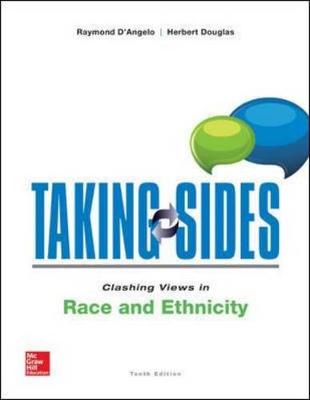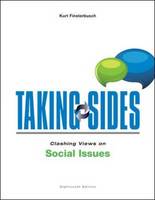Annual Editions: Dying, Death, and Bereavement 13/14
Annual Editions: Dying, Death, and Bereavement 13/14
Leming, Michael; Dickinson, George
McGraw-Hill Education - Europe
02/2013
192
Mole
Inglês
9780078051302
343
Descrição não disponível.
Annual Edition: Dying, Death, and Bereavement 13/14 Preface Series Correlation Guide Topic Guide Internet References UNIT 1: Issues in Dying and DeathUnit Overview1. The Dead, the Living, and Those Yet to Come, Charles Lemert, Contexts, 10(4), Fall 2011A prominent social theorist draws on classic sociological texts to explore what he calls the Society of the Dead-the one group we must all inevitably join.2. The Cycle of Death, Vince Beiser, Pacific Standard, May/June, 2012Some 40 years ago, Americans' moral qualms almost ended the death penalty. Now we are aban-doning capital punishment again, but not because we object to executions, according to Beiser.3. How We Bury the War Dead, Yochi J. Dreazen and Gary Fields, The Wall Street Journal, May 29, 2010To bring home the war dead for burial has not always been the case for the U.S. military. This arti-cle traces the history of war dead body disposition and gives the current situation.4. Grief in the Age of Facebook, Elizabeth Stone, The Chronicle Review, March 5, 2010Technology gives us a new way to express grief following a death: Face-book.5. Brain Death Guidelines Vary at Top US Neurological Hospitals, Susan Jeffrey, Medscape Medical News, 2008A recent survey reveals widespread brain death guidelines in U.S. hospitals.6. Criteria for a Good Death, Edwin Shneidman, Suicide and Life-Threatening Behavior, 37(3), 2007The late Edwin Shneidman outlines ten criteria for a good death.7. The Emergence of Thanatology and Current Practice in Death Education, Luciana M. Fonseca and Ines Testoni, Omega, 64(2), 2011-2012A history and evolution of thanatology in Western society is outlined.UNIT 2: Dying and Death Across the Life CycleUnit Overview8. Teaching Children about Death and Grief: Children Can Learn about Grief and Dying from Teachable Moments, Kirsti A. Dyer, Help a Child Cope with Loss or Death, Suite101.comPresents teachable moments regarding children and death.9. Death in Disney Films: Implications for Children's Understanding of Death, Meredith Cox, Erin Garrett, and James A. Graham, Omega, 50(4), 2004-2005Examines the potential influence of Disney films on children's concepts of death, using a con-tent analysis of Disney animated films.10. Death and Dying in the Curriculum of Public Schools: Is there a place?, Ethel L. King-McKenzie, Journal of Emerging Knowledge on Emerging Markets, 3, 2011Dying and death have traditionally been somewhat taboo topics in American culture. Should such a topic be addressed with children in pubic schools?11. Needs of Elderly Patients in Palliative Care, Helle Wijk and Agneta Grimby, American Journal of Hospice and Palliative Medicine, 29(2), April/May 2008A pilot study of elderly patients' end-of-life needs in a Swedish geriatric palliative care unit concluded that elimination of physical pain was a primary need of the patients.12. Good Mourning, George Dickinson, College of Charleston Magazine, 15(2), Spring 2011The article discusses the role of a veterinarian in the death of a pet and also the seri-ousness that should be given by everyone to the death of a child's companion animal.13. Through the Touch of God: Child Death and Spiritual Sustenance in a Hutterian Colony, Joanne Cacciatore and Rebecca Ong, Omega, 64(3), 2011-2012This ethnographic study of Hutterites in South Dakota uses participant observation and interviews in focusing on the death of children.14. End-of-Life Concerns and Care Preferences: Congruence Among Terminally Ill Elders and their Family Caregivers, Daniel S. Gardner and Betty J. Kramer, Omega, 60(3), 2009-2010An examination of end-of-life issues and care preferences of terminally ill older per-sons and their caregivers.UNIT 3: The Dying ProcessUnit Overview15. Dying on the Streets: Homeless Persons' Concerns and Desires about End-of-Life Care, John Song et al., Journal of General Internal Medicine, 22(4), April 2007In-depth interviews with 53 homeless individuals in Minnesota regarding end-of-life care con-cluded that they worry about dying and end-of-life care.16. Death and Dying across Cultures, Gihan ElGindy, MinorityNurse.com. http://www.minoritynurse.com, 2010Discusses the importance of nurses' being sensitive to unique religious and cultural needs of patients with terminal illnesses.17. The Promise of Presence, Paul Rousseau, American Journal of Hospice and Palliative Care, 28(6), 2011A physician laments his promising to return to check on a terminally ill patient, yet re-alizes later on that he did not return, only to then find out it was too late. This caring individual warns that if medical doctors promise presence, then they must be present.18. When Death Strikes without Warning, Jennifer Couzin, Science, 321, July 4, 2008Presents information about the devastating effect of epilepsy and sudden death.19. Are They Hallucinations or Are They Real? The Spirituality of Deathbed and Near-Death Visions, L. Stafford Betty, Omega, 53(1-2), 2006Do the living really see the dead? The author looks into this "twilight zone" to determine if this is real or a mere hallucination.20. Beyond Terror and Denial: The Positive Psychology of Death Acceptance, Paul T.P. Wong and Adrian Tomer, Death Studies, 35, 2011.Death is ubiquitous, yet whether the American society accepts or denies death is the question. The authors argue that psychologists need to focus more on death acceptance. They discuss terror manage-ment theory and meaning management theory.UNIT 4: Ethical Issues of Dying and DeathUnit Overview21. Ethics and Life's Ending: An Exchange, Robert D. Orr and Gilbert Meilaender, First Things, August/September 2004This article provides a point-counterpoint discussion of the quality-of-life arguments for passive euthanasia and the right to die. Knowledge from both points of view challenge the student who is attempting to formulate an understanding of the complex issues surrounding this controversy.22. Obituary for Jack Kevorkian, Associated Press. Minneapolis Star and Tribune, June 4, 2011This is the obituary for the famous and controversial Jack Kevorkian, "Dr. Death," who caused the American public to deal with legal issues related to physician-assisted suicide. The article discusses Kevorkian's philosophy and social activism to do something about human suffering for terminal patients.23. At the Bottom of the Slippery Slope, Wesley J. Smith, The Weekly Standard, July 4/July 11, 2011 (in CLS Digital Library held by McGraw-Hill)Smith argues that once society accepts euthanasia/organ harvesting, we will soon see agitation to pay seriously disabled or dying beople for their organs, a policy that Kevorkian advocated.24. Hospitals Embrace Palliative Care, Bridget M. Kuehn, Journal of the American Medical Association, 298(11), 1263-1265, September 19, 2007This article presents the argument that palliative care is the best form of competent care for patients living with a terminal illness. Providing a new model for palliative care, the article gives special attention to meeting psychological and physical needs of the dying patient.25. Cannabis Use in Long-Term Care: An Emerging Issue for Nurses, Roxanne Nelson, American Journal of Nursing, 111(4), 19-20, April 2011.When dealing with patients in end-of-life care and marijuana, many nurses' protocol is "don't ask, don't tell."26. I Was a Doctor Accustomed to Death, But Not His, Marc Agronin, Salon, February 5, 2011.Son tells his story of dealing with his own father as patient. It was a real lesson in caring for the dy-ing.UNIT 5: FuneralsUnit Overview27. The Contemporary American Funeral, Michael R. Leming and George E. Dickinson, Understanding Dying, Death, and Bereavement, W adsworth-Cengage, 2010This article provides an overview of the present practice of funeralization in American society, including the traditional and alternative funeral arrangements. The functions of funerals relative to the sociological, psychological, and theological needs of adults and children are also discussed.28. Building My Father's Coffin, John Manchester. Salon, June 4, 2010"My body is to be placed in a plain pine box. I would like my children to make the box." William Manchester knows that grief work is best when done as a family.29. Dealing with the Dead, Jennifer Egan, The New Yorker, October 11, 2010It is possible to facilitate our grieving by remembering dead relatives by wearing clothes and jewelry that once belonged to them to their funerals.30. Mourning in a Digital Age, Bruce Feiler, The New York Times, January 12, 2012This article discusses the way in which families can communicate with their potential supporters in the event of a death within their families, and how their friends can use the Internet to provide social support.31. 10 Burdens Funeral Directors Carry, Caleb Wilde,http://connectingdirectors.com/articles/35386-10-burdens-funeral-directors-carry and http://connectingdirectors.com/articles/35479-10-ways-funeral-directors-cope-caleb-wilde32. Memorial Videos Give Lasting Farewell, Jeff Strickler, Minneapolis Star and Tribune, June 6, 2011,http://www.startribune.com/lifestyle/relationship/123142533.html?page all&prepage 1&c y#continueNow you can speak at your own funeral and tell your mourners how your really feel.33. Speaking from Beyond the Grave; High-tech Headstones Use QR Codes to Link to Photos and Videos of the Dearly Departed, Jeff Strickler, Minneapolis Star and Tribune, July 15, 2012, http://www.startribune.com/lifestyle/162485776.htmlWith high-tech tombstones and QR codes, the deceased can talk back to those who visit their graves.UNIT 6: BereavementUnit Overview34. The Grieving Process, Michael R. Leming and George E. Dickinson, Understanding Dying, Death, and Bereavement, Wadsworth-Cengage, 2010This article discusses the seven basic coping strategies related to the bereavement process (shock and denial, disorganization, volatile emotions, guilt, loss and loneliness, relief, and reestablishment) and the four tasks of bereavement (accepting the reality of the loss, experiencing the pain of grief, adjusting to an environment in which the deceased is missing, and the withdrawing of emotional energy and reinvesting it in other relationships).35. The Normal Process of Grieving, Harvard Medical School, Harvard Mental Health Letter, December 2011.This article discusses experiences that are part of the normal spectrum of grieving, lasting from six to twelve months.36. A Guide to Getting Through Grief, Harvard Medical School, Harvard Mental Health Letter, December 2011.Dr. Michael Hirsh, a psychiatrist at Massachusetts General Hospital, offers advice for enabling people who are grieving to work through the bereavement process.37. Disenfranchised Grief, Kenneth J. Doka, Disenfranchised Grief: Recognizing Hidden Sorrow, Lexington Books, 1989Kenneth Doka discusses the unique situation of bereaved survivors whose loss is not, or cannot be, openly acknowledged, publicly mourned, or socially supported.38. Challenging the Paradigm: New Understandings of Grief, Kenneth J. Doka, 2007Kenneth Doka discusses five significant ways in which earlier understandings of or paradigms of grief have been challenged. He also discusses three current challenges to the field of thanatology and two others that are likely to occur in the not-too-distant future.39. We've Been Misled about How to Grieve, Nicholas Koehler, Maclean's Magazine, February 21, 2011This article discusses much of the misinformation most people assume about grieving.40. Shades of Grief: When Does Mourning Become a Mental Illness?, Virginia Hughes, Scientific American, June 7, 2011, http://www.scientificamerican.com/article.cfm?id=shades-of-griefThis article discusses the Diagnostic and Statistical Manual of Mental Disorders (DSM) and how it addresses "Complicated Grief Disorder," also known as traumatic or prolonged grief. The important question addressed is, When does normal grieving become pathological?41. 11 Ways to Comfort Someone Who's Grieving, Harvard Medical School, Health Beat, August 24, 2010If you find yourself tongue-tied or uncertain of what to do in the face of someone's loss, here are some steps to try.Test-Your-Knowledge Form
Este título pertence ao(s) assunto(s) indicados(s). Para ver outros títulos clique no assunto desejado.
Annual Edition: Dying, Death, and Bereavement 13/14 Preface Series Correlation Guide Topic Guide Internet References UNIT 1: Issues in Dying and DeathUnit Overview1. The Dead, the Living, and Those Yet to Come, Charles Lemert, Contexts, 10(4), Fall 2011A prominent social theorist draws on classic sociological texts to explore what he calls the Society of the Dead-the one group we must all inevitably join.2. The Cycle of Death, Vince Beiser, Pacific Standard, May/June, 2012Some 40 years ago, Americans' moral qualms almost ended the death penalty. Now we are aban-doning capital punishment again, but not because we object to executions, according to Beiser.3. How We Bury the War Dead, Yochi J. Dreazen and Gary Fields, The Wall Street Journal, May 29, 2010To bring home the war dead for burial has not always been the case for the U.S. military. This arti-cle traces the history of war dead body disposition and gives the current situation.4. Grief in the Age of Facebook, Elizabeth Stone, The Chronicle Review, March 5, 2010Technology gives us a new way to express grief following a death: Face-book.5. Brain Death Guidelines Vary at Top US Neurological Hospitals, Susan Jeffrey, Medscape Medical News, 2008A recent survey reveals widespread brain death guidelines in U.S. hospitals.6. Criteria for a Good Death, Edwin Shneidman, Suicide and Life-Threatening Behavior, 37(3), 2007The late Edwin Shneidman outlines ten criteria for a good death.7. The Emergence of Thanatology and Current Practice in Death Education, Luciana M. Fonseca and Ines Testoni, Omega, 64(2), 2011-2012A history and evolution of thanatology in Western society is outlined.UNIT 2: Dying and Death Across the Life CycleUnit Overview8. Teaching Children about Death and Grief: Children Can Learn about Grief and Dying from Teachable Moments, Kirsti A. Dyer, Help a Child Cope with Loss or Death, Suite101.comPresents teachable moments regarding children and death.9. Death in Disney Films: Implications for Children's Understanding of Death, Meredith Cox, Erin Garrett, and James A. Graham, Omega, 50(4), 2004-2005Examines the potential influence of Disney films on children's concepts of death, using a con-tent analysis of Disney animated films.10. Death and Dying in the Curriculum of Public Schools: Is there a place?, Ethel L. King-McKenzie, Journal of Emerging Knowledge on Emerging Markets, 3, 2011Dying and death have traditionally been somewhat taboo topics in American culture. Should such a topic be addressed with children in pubic schools?11. Needs of Elderly Patients in Palliative Care, Helle Wijk and Agneta Grimby, American Journal of Hospice and Palliative Medicine, 29(2), April/May 2008A pilot study of elderly patients' end-of-life needs in a Swedish geriatric palliative care unit concluded that elimination of physical pain was a primary need of the patients.12. Good Mourning, George Dickinson, College of Charleston Magazine, 15(2), Spring 2011The article discusses the role of a veterinarian in the death of a pet and also the seri-ousness that should be given by everyone to the death of a child's companion animal.13. Through the Touch of God: Child Death and Spiritual Sustenance in a Hutterian Colony, Joanne Cacciatore and Rebecca Ong, Omega, 64(3), 2011-2012This ethnographic study of Hutterites in South Dakota uses participant observation and interviews in focusing on the death of children.14. End-of-Life Concerns and Care Preferences: Congruence Among Terminally Ill Elders and their Family Caregivers, Daniel S. Gardner and Betty J. Kramer, Omega, 60(3), 2009-2010An examination of end-of-life issues and care preferences of terminally ill older per-sons and their caregivers.UNIT 3: The Dying ProcessUnit Overview15. Dying on the Streets: Homeless Persons' Concerns and Desires about End-of-Life Care, John Song et al., Journal of General Internal Medicine, 22(4), April 2007In-depth interviews with 53 homeless individuals in Minnesota regarding end-of-life care con-cluded that they worry about dying and end-of-life care.16. Death and Dying across Cultures, Gihan ElGindy, MinorityNurse.com. http://www.minoritynurse.com, 2010Discusses the importance of nurses' being sensitive to unique religious and cultural needs of patients with terminal illnesses.17. The Promise of Presence, Paul Rousseau, American Journal of Hospice and Palliative Care, 28(6), 2011A physician laments his promising to return to check on a terminally ill patient, yet re-alizes later on that he did not return, only to then find out it was too late. This caring individual warns that if medical doctors promise presence, then they must be present.18. When Death Strikes without Warning, Jennifer Couzin, Science, 321, July 4, 2008Presents information about the devastating effect of epilepsy and sudden death.19. Are They Hallucinations or Are They Real? The Spirituality of Deathbed and Near-Death Visions, L. Stafford Betty, Omega, 53(1-2), 2006Do the living really see the dead? The author looks into this "twilight zone" to determine if this is real or a mere hallucination.20. Beyond Terror and Denial: The Positive Psychology of Death Acceptance, Paul T.P. Wong and Adrian Tomer, Death Studies, 35, 2011.Death is ubiquitous, yet whether the American society accepts or denies death is the question. The authors argue that psychologists need to focus more on death acceptance. They discuss terror manage-ment theory and meaning management theory.UNIT 4: Ethical Issues of Dying and DeathUnit Overview21. Ethics and Life's Ending: An Exchange, Robert D. Orr and Gilbert Meilaender, First Things, August/September 2004This article provides a point-counterpoint discussion of the quality-of-life arguments for passive euthanasia and the right to die. Knowledge from both points of view challenge the student who is attempting to formulate an understanding of the complex issues surrounding this controversy.22. Obituary for Jack Kevorkian, Associated Press. Minneapolis Star and Tribune, June 4, 2011This is the obituary for the famous and controversial Jack Kevorkian, "Dr. Death," who caused the American public to deal with legal issues related to physician-assisted suicide. The article discusses Kevorkian's philosophy and social activism to do something about human suffering for terminal patients.23. At the Bottom of the Slippery Slope, Wesley J. Smith, The Weekly Standard, July 4/July 11, 2011 (in CLS Digital Library held by McGraw-Hill)Smith argues that once society accepts euthanasia/organ harvesting, we will soon see agitation to pay seriously disabled or dying beople for their organs, a policy that Kevorkian advocated.24. Hospitals Embrace Palliative Care, Bridget M. Kuehn, Journal of the American Medical Association, 298(11), 1263-1265, September 19, 2007This article presents the argument that palliative care is the best form of competent care for patients living with a terminal illness. Providing a new model for palliative care, the article gives special attention to meeting psychological and physical needs of the dying patient.25. Cannabis Use in Long-Term Care: An Emerging Issue for Nurses, Roxanne Nelson, American Journal of Nursing, 111(4), 19-20, April 2011.When dealing with patients in end-of-life care and marijuana, many nurses' protocol is "don't ask, don't tell."26. I Was a Doctor Accustomed to Death, But Not His, Marc Agronin, Salon, February 5, 2011.Son tells his story of dealing with his own father as patient. It was a real lesson in caring for the dy-ing.UNIT 5: FuneralsUnit Overview27. The Contemporary American Funeral, Michael R. Leming and George E. Dickinson, Understanding Dying, Death, and Bereavement, W adsworth-Cengage, 2010This article provides an overview of the present practice of funeralization in American society, including the traditional and alternative funeral arrangements. The functions of funerals relative to the sociological, psychological, and theological needs of adults and children are also discussed.28. Building My Father's Coffin, John Manchester. Salon, June 4, 2010"My body is to be placed in a plain pine box. I would like my children to make the box." William Manchester knows that grief work is best when done as a family.29. Dealing with the Dead, Jennifer Egan, The New Yorker, October 11, 2010It is possible to facilitate our grieving by remembering dead relatives by wearing clothes and jewelry that once belonged to them to their funerals.30. Mourning in a Digital Age, Bruce Feiler, The New York Times, January 12, 2012This article discusses the way in which families can communicate with their potential supporters in the event of a death within their families, and how their friends can use the Internet to provide social support.31. 10 Burdens Funeral Directors Carry, Caleb Wilde,http://connectingdirectors.com/articles/35386-10-burdens-funeral-directors-carry and http://connectingdirectors.com/articles/35479-10-ways-funeral-directors-cope-caleb-wilde32. Memorial Videos Give Lasting Farewell, Jeff Strickler, Minneapolis Star and Tribune, June 6, 2011,http://www.startribune.com/lifestyle/relationship/123142533.html?page all&prepage 1&c y#continueNow you can speak at your own funeral and tell your mourners how your really feel.33. Speaking from Beyond the Grave; High-tech Headstones Use QR Codes to Link to Photos and Videos of the Dearly Departed, Jeff Strickler, Minneapolis Star and Tribune, July 15, 2012, http://www.startribune.com/lifestyle/162485776.htmlWith high-tech tombstones and QR codes, the deceased can talk back to those who visit their graves.UNIT 6: BereavementUnit Overview34. The Grieving Process, Michael R. Leming and George E. Dickinson, Understanding Dying, Death, and Bereavement, Wadsworth-Cengage, 2010This article discusses the seven basic coping strategies related to the bereavement process (shock and denial, disorganization, volatile emotions, guilt, loss and loneliness, relief, and reestablishment) and the four tasks of bereavement (accepting the reality of the loss, experiencing the pain of grief, adjusting to an environment in which the deceased is missing, and the withdrawing of emotional energy and reinvesting it in other relationships).35. The Normal Process of Grieving, Harvard Medical School, Harvard Mental Health Letter, December 2011.This article discusses experiences that are part of the normal spectrum of grieving, lasting from six to twelve months.36. A Guide to Getting Through Grief, Harvard Medical School, Harvard Mental Health Letter, December 2011.Dr. Michael Hirsh, a psychiatrist at Massachusetts General Hospital, offers advice for enabling people who are grieving to work through the bereavement process.37. Disenfranchised Grief, Kenneth J. Doka, Disenfranchised Grief: Recognizing Hidden Sorrow, Lexington Books, 1989Kenneth Doka discusses the unique situation of bereaved survivors whose loss is not, or cannot be, openly acknowledged, publicly mourned, or socially supported.38. Challenging the Paradigm: New Understandings of Grief, Kenneth J. Doka, 2007Kenneth Doka discusses five significant ways in which earlier understandings of or paradigms of grief have been challenged. He also discusses three current challenges to the field of thanatology and two others that are likely to occur in the not-too-distant future.39. We've Been Misled about How to Grieve, Nicholas Koehler, Maclean's Magazine, February 21, 2011This article discusses much of the misinformation most people assume about grieving.40. Shades of Grief: When Does Mourning Become a Mental Illness?, Virginia Hughes, Scientific American, June 7, 2011, http://www.scientificamerican.com/article.cfm?id=shades-of-griefThis article discusses the Diagnostic and Statistical Manual of Mental Disorders (DSM) and how it addresses "Complicated Grief Disorder," also known as traumatic or prolonged grief. The important question addressed is, When does normal grieving become pathological?41. 11 Ways to Comfort Someone Who's Grieving, Harvard Medical School, Health Beat, August 24, 2010If you find yourself tongue-tied or uncertain of what to do in the face of someone's loss, here are some steps to try.Test-Your-Knowledge Form
Este título pertence ao(s) assunto(s) indicados(s). Para ver outros títulos clique no assunto desejado.














